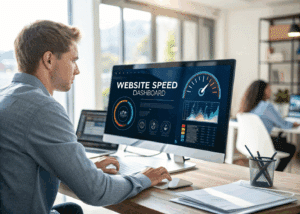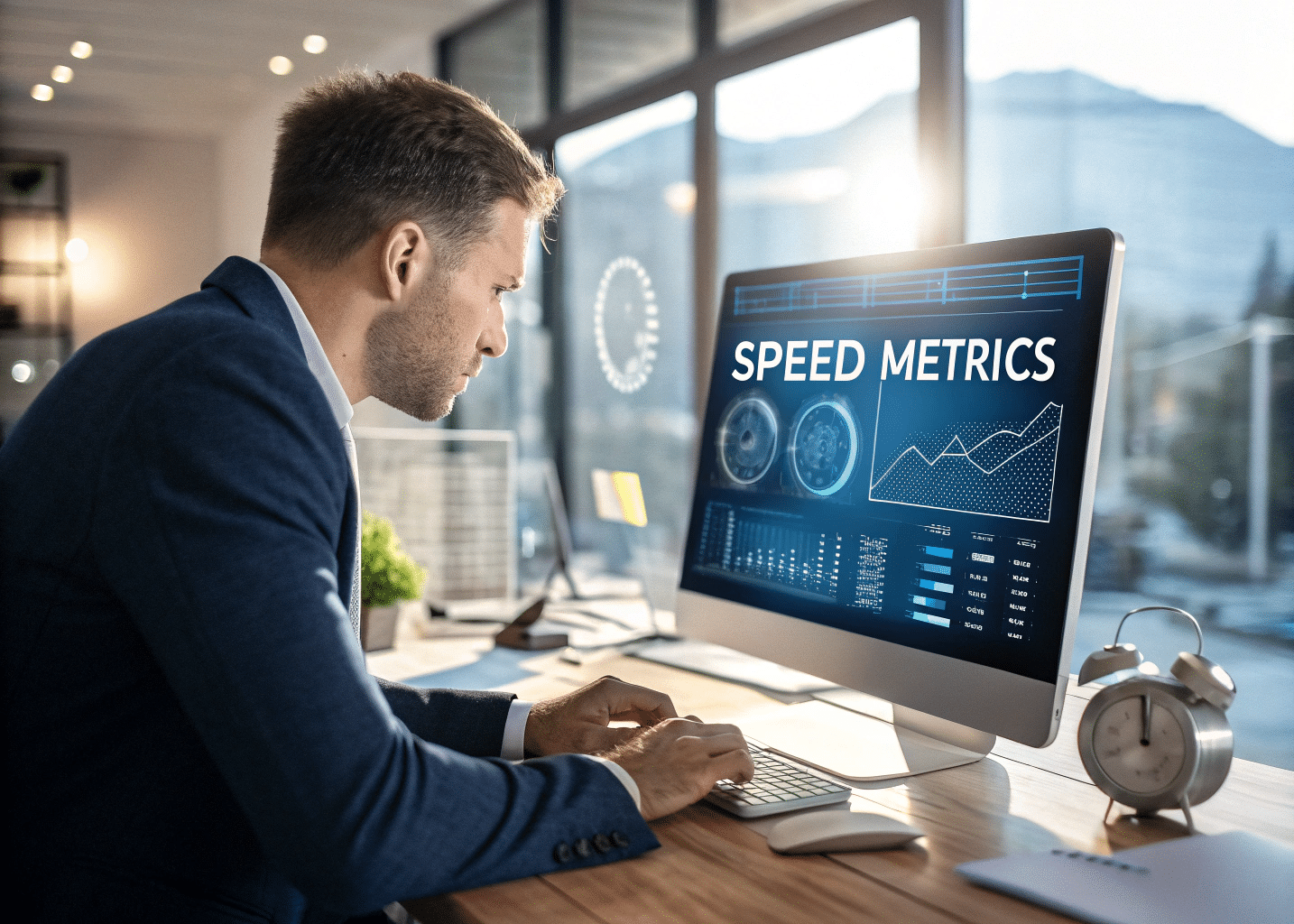Table of Contents
- Key Takeaways
- The Psychology of Speed
- First Impressions Matter
- Perceived Reliability
- Cognitive Load and Speed
- Why Speed Boosts Sales
- How Speed Impacts Visibility
- Enhance Your Website and Increase Traffic
Studies show that a one-second delay in page load time decreases customer satisfaction by 16% and results in a 7% decrease in conversions. If your website takes too long to load, users are more likely to abandon it and look for faster alternatives.
Users expect websites to load quickly. Any delay in load time can frustrate visitors and directly affect your sales. At Texas Web Design, we specialize in optimizing website performance to improve load times, enhance user experience, and increase conversions.
Don’t let slow load times cost you customers. Contact us today and let’s transform your website into a high-speed, conversion-driving powerhouse.
Key Takeaways
- A one-second delay in page load time can result in a 7% decrease in conversions and a 16% drop in customer satisfaction. Faster websites lead to higher user engagement, better conversions, and increased sales.
- Fast-loading websites build trust and a positive first impression, making visitors more likely to stay and engage. Slow sites erode trust and lead to higher bounce rates.
- Users judge websites in less than 50 milliseconds. Speed plays a significant role in shaping those initial impressions—faster sites are perceived as more professional and reliable.
- Fast sites build credibility and trust. Slow websites are often seen as outdated and unprofessional, potentially losing customers to faster competitors.
- Slow websites create cognitive friction, which impedes decision-making and frustrates users. Fast-loading pages ensure smoother navigation, enhancing user experience and increasing the likelihood of conversions.
- Faster websites are favored by search engines like Google, which impacts visibility and rankings. Slow sites are penalized, and faster load times contribute to higher rankings and more user engagement.
- Website speed is a key factor in both user experience and search engine visibility. A faster site encourages longer visits, more exploration, and improved conversions.
The Psychology of Speed
Website speed profoundly influences user psychology, shaping trust, satisfaction, and behavior. A fast-loading site immediately creates a positive first impression, signaling professionalism and reliability.
In contrast, slow loading times frustrate users, eroding trust in the brand’s credibility. When trust is compromised, users are more likely to abandon the site before engaging or completing a purchase, leading to higher bounce rates and lost opportunities.
First Impressions Matter

Conversely, slow load times lead to immediate bounces. Websites must load in under two seconds, as studies show that users will leave before the page finishes loading if it takes longer.
A fast site reflects professionalism and respect for the user’s time, which significantly impacts the brand image. Speed is also a key factor in user retention. When visitors experience smooth navigation, they’re more likely to stay longer, explore further, and convert.
Perceived Reliability
Websites that load quickly are perceived as more reliable and trustworthy. They give users confidence in the brand’s ability to meet their needs.
Slow sites, on the other hand, can seem outdated or unprofessional, leading to doubts about the company’s capacity to satisfy customer expectations. Trust is important and speed is a powerful factor in building and maintaining it. Once trust is lost due to slow performance, it’s hard to regain.
Cognitive Load and Speed
Slow-loading websites create cognitive friction, which frustrates users and hinders engagement. This “cognitive friction” occurs when delays disrupt a user’s concentration and decision-making process. Fast-loading pages, on the other hand, make navigation effortless. Users can quickly move through the site without unnecessary interruptions.
When visitors can easily navigate a site without being distracted by slow load times, they’re more likely to convert. Speed maintains momentum, enhancing the user experience and making it easier for customers to make decisions.
Why Speed Boosts Sales
Website speed doesn’t just enhance user experience; it directly influences sales. A fast-loading website is essential for conversions, customer loyalty, and brand trust.
Here are four key ways speed influences sales:
- User Experience: A faster website reduces frustration and keeps the buying process smooth. Studies show that users prefer fast sites, with even a one-second delay reducing satisfaction by 16%. Since over half of web traffic comes from mobile devices, slow sites increase bounce rates, particularly on mobile.
- Conversion Rates: Speed increases conversions. A one-second delay can decrease conversions by up to 7%. A fast site keeps users on the buying path, whereas slow pages lead to abandoned carts and lost sales.
- Customer Loyalty: Speed fosters loyalty. Users are more likely to return to sites that load quickly and provide a reliable experience. Fast-loading sites create positive experiences that encourage repeat visits, while slow sites risk losing customers to faster competitors.
- Brand Trust: Fast websites enhance the brand image, showcasing professionalism and trustworthiness. Slow sites damage the brand’s reputation, driving users to competitors. Speed generates positive word-of-mouth and referral business from satisfied customers.
How Speed Impacts Visibility

Search Rankings
Page speed is an important ranking factor for Google. Google favors faster sites because they provide a better user experience. Slow-loading sites are penalized, pushing them lower in search engine results pages (SERPs), which means fewer potential customers will find them.
Research indicates that sites that load in 2-3 seconds are more likely to appear on the first page of results. A one-second delay can result in 32% of users abandoning the page. Mobile speed is especially important due to mobile-first indexing. Slow mobile pages significantly impact rankings.
User Signals
Search engines use user interaction signals to evaluate a site’s quality and relevance. Slow websites typically experience high bounce rates, as users leave without engaging. For example, a 4-second delay leads to a bounce rate of over 24%. In contrast, fast sites encourage users to stay longer and interact more, signaling to search engines that the site is valuable.
Faster load times increase click-through rates (CTR) and dwell time, which in turn improves search rankings. Visitors are more likely to explore a fast site rather than leaving immediately.
Enhance Your Website and Increase Traffic
Website speed is important for both user experience and business success. At Texas Web Design, we understand that faster sites provide seamless interactions, keep visitors engaged, and build trust. A quick-loading website encourages visitors to stay longer, explore more, and make purchases, while also boosting search engine visibility.
Every second matters. Delays lead to lost opportunities. Speed gives your business a competitive advantage, showing that you value your customers’ time.
Call us today, and let’s work together to transform your website into a powerful growth engine.


